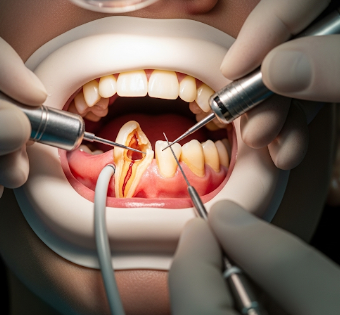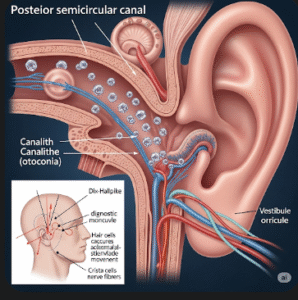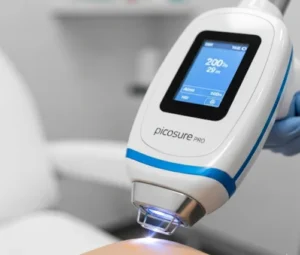What it is
Root canal treatment (endodontic therapy) is a dental procedure used to treat infection inside a tooth. The infection occurs in the pulp (soft tissue inside the tooth containing nerves and blood vessels) due to deep decay, repeated dental procedures, cracks, or trauma.
➡ Key facts:
- ✔ Root canal therapy saves teeth that would otherwise need extraction
- ✔ Involves removing infected pulp, cleaning canals, and sealing them
- ✔ Final restoration with a crown or filling strengthens the tooth
- ✔ Widely available in dental hospitals and private clinics in Korea with advanced technology
💡 In Korea, dental care is known for its precision, modern equipment, and affordability compared to many Western countries. Root canal treatment is a standard procedure performed by general dentists and specialized endodontists across major cities.
Why it’s done
Doctors recommend root canal treatment to:
➤ Treat severe tooth pain due to pulp inflammation or infection
➤ Prevent tooth loss by saving the natural tooth structure
➤ Stop spread of infection to surrounding teeth, gums, or jawbone
➤ Restore chewing and aesthetics while avoiding implants or dentures
⚠ Without treatment, the infection can cause abscesses, bone damage, or systemic infection.
Alternatives
While root canal treatment is often the best way to save a tooth, alternatives include:
✔ Tooth extraction → followed by dental implant, bridge, or denture
✔ Pulp capping (for very early pulp exposure) → protects pulp without full root canal
✔ Do nothing → but this leads to worsening infection, pain, and tooth loss
Preparation
Before a root canal in Korea:
🔹 Dental consultation: X-rays taken to check extent of infection
🔹 Anesthesia review: Inform dentist about allergies or health conditions
🔹 No fasting needed – it’s usually an outpatient procedure
🔹 Discuss restoration options → crown vs filling after root canal
How it’s done
➡ Step-by-step root canal procedure in Korea:
- Local anesthesia → Numbs the tooth and surrounding area
- Isolation → Tooth is covered with a rubber dam to keep it clean and dry
- Access opening → Dentist drills an opening in the crown to reach pulp
- Pulp removal → Infected pulp tissue carefully removed
- Cleaning & shaping → Canals cleaned with disinfectants and shaped using rotary files
- Filling canals → Canals sealed with gutta-percha material to prevent reinfection
- Temporary or permanent filling → Sometimes crown is added in a later appointment
- Crown placement (if needed) → Final step for strength and durability
Effectiveness & Success Rate
✔ Success rate of root canals in Korea: 90–95%
✔ Teeth last 10–20+ years with proper care
✔ Modern digital imaging and rotary systems in Korea improve precision and outcomes
Recovery / Expected Outcomes
✔ Mild pain or swelling may last 2–3 days, easily managed with painkillers
✔ Most patients resume normal eating the same day (avoid hard chewing initially)
✔ Tooth regains full function after final restoration (crown/filling)
✔ Prevents further decay, abscesses, and bone loss
Complications / Considerations
⚠ Possible risks:
- Temporary pain or swelling
- Canal not fully cleaned (rare, may require retreatment)
- Tooth fracture if crown not placed
- Allergic reaction to materials (very rare)
⚠ Special considerations in Korea:
- Endodontists (specialists) often handle complex cases
- Cost is more affordable compared to Western countries, but crowns may add extra cost
Treatment Options in Korea
🔹 Diagnosis
- Dental X-rays (periapical, panoramic, or CBCT scan)
- Clinical exam for pain, swelling, or abscess
🔹 Medical treatments
- Pain relievers & antibiotics (before or after procedure if infection spreads)
- Single-visit root canal (common in Korea for simpler cases)
- Multi-visit treatment (for severe infection)
🔹 Surgical or advanced therapies
- Apicoectomy (root-end surgery) → removes infected root tip if standard RCT fails
- Retreatment → repeat root canal for failed cases
- Post & core buildup → restores severely damaged tooth before crown placement
🔹 Rehabilitation & support
- Follow-up visits to ensure healing
- Crown placement for long-term strength
- Dental hygiene & regular check-ups to prevent reinfection
Top Hospitals & Dental Clinics in Korea
🏥 Seoul National University Dental Hospital – Leading in advanced endodontics
🏥 Yonsei University Dental Hospital (Severance) – Renowned for complex dental treatments
🏥 Samsung Medical Center, Dental Clinic – High-tech dental equipment for precision care
🏥 Private dental clinics in Gangnam & Busan – Popular for affordable and efficient treatments with English-speaking staff
Conclusion
Root canal treatment in Korea is a safe, effective, and affordable way to save natural teeth while preventing serious dental complications.
✔ Highly successful procedure (90–95%)
✔ Performed with modern rotary systems, digital imaging, and microscope-assisted precision
✔ Affordable compared to Western countries
✔ Widely available at dental hospitals and private clinics
By choosing root canal therapy in Korea, patients can avoid tooth extraction, maintain natural smiles, and enjoy long-lasting oral health with professional care.













